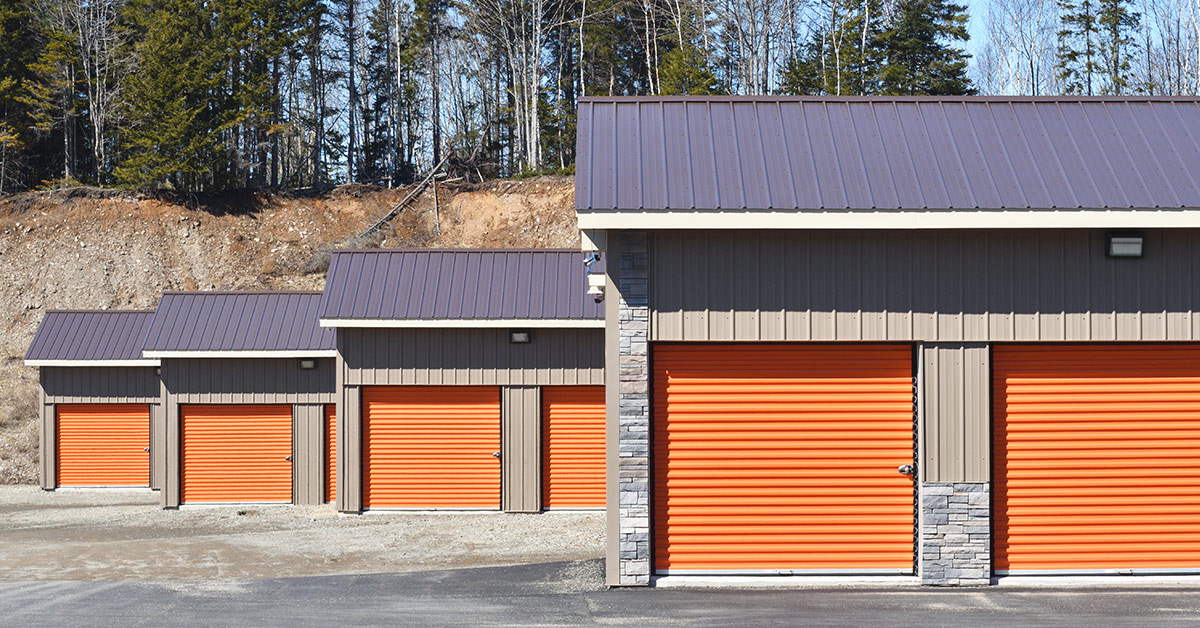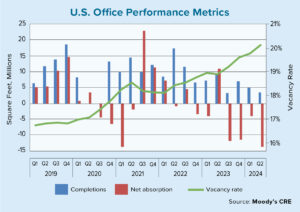Self-storage facilities did fairly well last year even during the height of the COVID-19 pandemic. Widely perceived as lower risk and even “recession proof,” the sector has been changing through the infusion of Wall Street money, new technology and innovative designs. The sector also has been on a decade-long growth spurt. But will these good times last?
Experts say plenty of investors will hunt for mortgages this year to buy or build self-storage facilities. But the business itself is not easy, unsophisticated or risk-free given a long-running construction boom and the emergence of multibillion-dollar self-storage real estate investment trusts (REITs) that are flexing their muscles in markets that once only had mom-and-pop operations. Banks and private lenders alike also have been taking a harder line on self-storage loan pitches in the wake of pandemic.
The health crisis significantly reduced deal activity in spring 2020 across all commercial real estate sectors, including self-storage. According to Marcus & Millichap, self-storage deals valued at $1 million or more declined year over year by 27% in 2020. Sales activity, however, picked up in the early summer months. In general, self-storage fundamentals also held up, which contributed to a temporary spike in demand for self-storage space in the early months of the outbreak.
“The self-storage industry has proven to have some recession-resistant qualities to it,” says Steven Weinstock, national director of Marcus & Millichap’s self-storage division.
During the early months of the pandemic, many people made use of self-storage facilities when moving, or even when emptying out basements or spare rooms to make room for home offices and gyms. Also, college students left dorms earlier in the year, which reportedly created a rush on storage space in university towns.
“Even during a downturn, people still need to store their stuff and, in the pandemic, it proved to be really vital,” Weinstock says.
Weinstock notes that the burst in demand, coupled with a slowdown in construction after the onset of COVID-19 in March 2020, drove down vacancy rates in subsequent months. Several U.S. cities, however, have a glut of unused self-storage space that poses a longer-term problem for the sector, studies suggest.
According to Moody’s Analytics Reis, more than 1.2 million new self-storage units came online between first-quarter 2016 and first-quarter 2020, but only 750,000 of these units were absorbed during this period. As of Q1 2020, the U.S. vacancy rate rose to a cyclical high of 14.9%, Moody’s reported.
Marcus & Millichap pegged the national self-storage vacancy rate at a significantly lower number than Moody’s, estimating that vacancies reached 8.3% at the end of 2020 after falling to a record-low 7.3% in the third quarter due to a surge of moving activities after the pandemic struck. The company, however, has identified several cities that are oversupplied with self-storage space, including Austin and Nashville. Weinstock says the extra space will eventually be absorbed.
“The markets that are overbuilt will correct themselves and the markets that are underbuilt are getting more units,” Weinstock says.
During the height of the pandemic, banks and private lenders tightened their parameters for funding self-storage projects. Billy Meyer, managing director of real estate lending at Columbia Pacific Advisors, says that lenders favor the rent stability and controlled costs of the self-storage business but do not evaluate the typical self-storage deal differently than other assets. Lenders care about location, competition and potential demand versus the numbers of units in a particular market. In terms of financing a new self-storage development, he says that lenders are trying to determine how long it will take to lease up a facility.
“It is pretty standard,” Meyer says. “It is very driven by the market demand for any given product and who your competitors are, and what’s in the pipeline for new construction in your market area. So, it’s just basic economics if a deal is attractive or not.”
Pandemic-induced skittishness will likely be short-lived, says Adam Levin, executive managing director of Levin Johnston, which brokers self-storage deals and invests in these properties. He says that financing is only difficult for properties that have less than 80% occupancy. He also expects the values of self-storage properties to continue rising this year.
“We had a little bit of a plateau effect there with the whole COVID crisis,” Levin says. “A lot of investors were a little bit frozen. Banks are a little bit more nervous, but lenders tend to like self-storage products.”
Longer term, the self-storage industry has some factors in its favor that should sustain its growth and stability. The industry has become more sophisticated, employing professional management companies while adopting technologies to allow customers to get into buildings at all hours and pay bills online. Large self-storage REITs, such as Public Storage and CubeSmart, are pushing new designs and technologies. Self-storage facilities are no longer, by default, indistinct single-story metal buildings with chain-link fences around the perimeter. They can be multistory buildings that resemble branded department stores and offer 24/7 access.
Another trend also bodes well for the sector, Weinstock says. Many people, especially younger generations, are routinely renting self-storage space to serve as their garage away from home.
“In an urban setting, people use it as a second closet and they go there weekly to swap out clothing,” Weinstock says. “Twenty years ago, we put grandma’s china in the self-storage unit, and we let it sit there thinking our kids or grandchildren would one day take it. Well, kids today aren’t doing that.” ●
Author
-

Victor Whitman is a contributing writer for Scotsman Guide and a former editor of the publication’s commercial magazine.
View all posts







